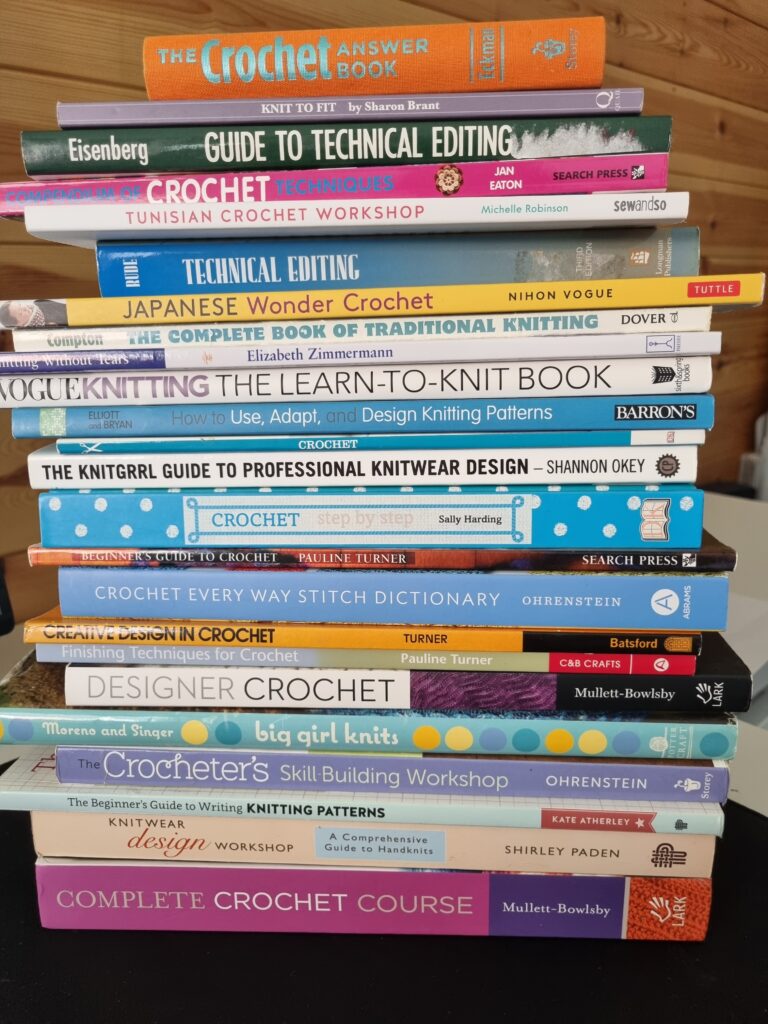Crochet Pattern Abbreviations: A Useful Guide
If you’re learning how to write crochet patterns, understanding crochet pattern abbreviations is essential. Crochet abbreviations allow you to write concise, professional instructions without overwhelming your readers with long phrases. They also make your patterns easier to follow and help maintain consistency across designs.
This post is part of our blog series on How to Write Brilliant Crochet Patterns.
In this guide, you’ll learn all the standard crochet abbreviations, how to use them correctly, and tips for making your patterns accessible to crocheters of all skill levels.

Why Abbreviations Matter in Crochet Patterns
- Clarity: Short abbreviations keep instructions concise and readable.
- Consistency: Using standard abbreviations avoids confusion.
- Professionalism: Well-structured abbreviations make your patterns look polished.
- Global Use: Standard abbreviations are recognized internationally, making your patterns accessible to a wider audience.
UK vs. US Crochet Abbreviations
Crochet abbreviations differ between UK and US terminology, so it’s crucial to specify which you’re using at the start of your pattern. A full list can be found at the Yarn Craft Council website.
| US Term | UK Term | Abbreviation | Example |
|---|---|---|---|
| Single Crochet | Double Crochet | sc | sc in next 5 sts |
| Half Double Crochet | Half Treble Crochet | hdc | hdc across row |
| Double Crochet | Treble Crochet | dc | dc in next st |
| Treble Crochet | Double Treble Crochet | tr | tr in next st |
💡 Tip: Always include a note at the top of your pattern:
“This pattern uses US terminology.”
Commonly Used Crochet Abbreviations
Here’s a list of abbreviations you should include in every pattern:
- ch – chain
- sl st – slip stitch
- sc – single crochet (US) / double crochet (UK)
- hdc – half double crochet (US) / half treble crochet (UK)
- dc – double crochet (US) / treble crochet (UK)
- tr – treble crochet (US) / double treble crochet (UK)
- inc – increase
- dec – decrease
- rep – repeat
- RS / WS – right side / wrong side
You can expand this list depending on the techniques used in your design.
How to Use Abbreviations Effectively
- Include a glossary at the end of your pattern for reference.
- Be consistent — don’t switch between abbreviations and full stitch names.
- Clarify repeats and sequences using brackets or asterisks, e.g.,
*sc in next 3 sts, dc in next st; rep from * across row.
- Note variations for beginner vs. advanced instructions.
Tips for Accessibility
- Even if your pattern is intended for experienced crocheters, consider including a short note explaining uncommon abbreviations.
- Include links or footnotes to tutorials for more complex stitches.
- For patterns sold internationally, clearly label whether US or UK terms are used.
Common Mistakes with Abbreviations
- Mixing US and UK terminology without warning.
- Forgetting to define uncommon abbreviations.
- Skipping stitch counts after repeats.
- Using inconsistent formatting for repeats or brackets.
Avoiding these mistakes ensures your patterns are professional and easy to follow.
To finish off…
Mastering crochet pattern abbreviations is essential for writing clear, professional patterns. By using standard abbreviations, being consistent, and providing helpful notes, you’ll make your patterns enjoyable to follow and accessible to a wider audience.
💡 Next Step: Check out my full hub article How to Write Brilliant Crochet Patterns for step-by-step tips on creating polished, professional crochet patterns from start to finish.

3 Comments